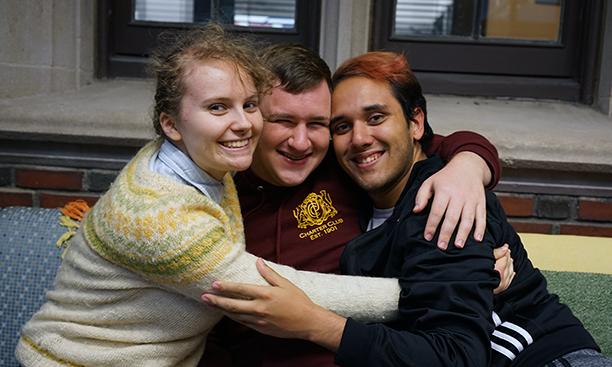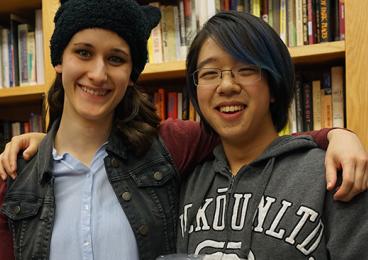
Being an LGBT student at Princeton was never easy, but the challenges that students faced before the creation of the LGBT Center in 2006 and the support they received afterward empowered them to stand proud of their identities. At the 10th anniversary celebration of the LGBT Center Oct. 14, alumni from the 1970s to the 2000s shared their stories with an audience of about 40 students, alumni, and administrators.
In a speech read by Megan Roche ’19, Abby Rubenfeld ’75 discussed being a closeted lesbian as an undergraduate. “We surely wouldn’t join [the Gay-Straight Alliance] — that terrified us,” Rubenfeld wrote. “But we went to the first gay dances at Princeton — in support of friends and relatives, of course, never ourselves.”
Even two decades later, coming out as LGBT took courage. Suman Chakraborty ’97 joked that by Christmas of freshman year, “I was out, I had a boyfriend, and I had an earring,” but being openly gay only brought more challenges. One campus publication ran a gossip column on Chakraborty’s sex life, and even as the LGBT student group marked its 25th anniversary, other students called on the administration to divest from LGBT groups and dances, which they claimed were meant to “seduce straight students.”

More recent graduates found that even though coming out at Princeton was still difficult, they could look to administrators and faculty for support and validation.
Wade Rakes ’02 expressed his appreciation for Debbie Bazarsky, the LGBT Center’s first director, who “knew I was gay before I did,” Rakes said. “I got lucky because [Bazarsky] knew the needs I had, even before I had come to terms with it.”
Former University President Shirley Tilghman was also helpful in making LGBT students feel welcomed, Fiona Miller ’09 noted. Once, Princeton was ranked number one in the U.S. News & World Report college rankings and also ranked in the top 20 colleges for LGBT students. That year Tilghman gave a speech where she said she was more proud of the top-20 ranking than the top spot from U.S. News, and that always stuck with Miller.
“A lot of times big institutions will wait for the culture to change and then at the end of the culture change take their stand,” Miller said. “But Princeton took their stand first and let the culture catch up to them.”
